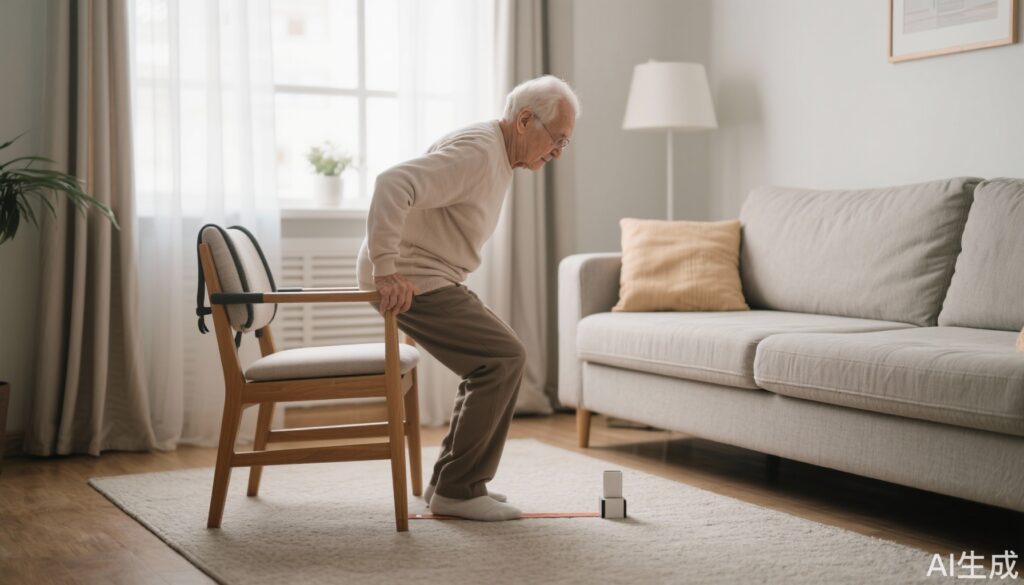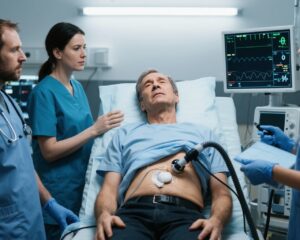Introduction
The quest to understand human longevity has intrigued people for millennia. Ancient cultures devised various, often mystical, methods to predict lifespan, ranging from observing facial complexion and physical vigor to examining ear shape, teeth durability, or even using birth charts. While these traditional indicators may have lacked scientific basis, modern research is homing in on objective, practical markers for aging and longevity.
Recent studies published in leading medical journals, such as the European Journal of Preventive Cardiology, highlight remarkably simple yet effective methods to assess health risks related to aging. This article reviews groundbreaking findings about the sitting-rising test (SRT) and single-leg standing time as robust predictors of mortality risk and neuromuscular aging in middle-aged and older adults.
What is the Sitting-Rising Test (SRT)?
The sitting-rising test is a straightforward physical task involving sitting down on the floor and then rising back to a standing position, minimizing the use of hands or knees to support one’s body. It essentially tests an individual’s muscle strength, flexibility, balance, and body composition—all crucial components of physical fitness.
Subjects are scored out of a maximum of 10, with points deducted for supporting the body with hands, knees, or instability. For example, if a person uses their hand once to aid sitting and once to steady themselves rising but overall remains stable, they might score 8 out of 10.
Scientific Evidence Linking SRT Scores to Mortality Risk
A landmark study by Araújo and colleagues [1] analyzed middle-aged and older men and women performing the SRT and tracked their health outcomes over time. The findings were striking:
– Individuals unable to complete the sitting-rising test without support had a 3.84 times higher risk of natural death compared to those scoring the maximum.
– There was a clear gradient: the lower the SRT score, the higher the risk of mortality, both from any cause and specifically cardiovascular causes.
– The difference in mortality risk between high and low scorers approached 38 percentage points.
Focusing solely on the rising phase also revealed significant risk differentiation, indicating that impaired ability to stand from the ground is a particularly sensitive marker.
Why Does Such a Simple Test Predict Longevity?
The SRT integrates multiple physical capacities — muscle strength, explosive power, flexibility, balance, and body composition — all of which tend to decline with aging. Those scoring low often exhibit muscle weakness, poor flexibility, impaired balance, and increased body fat — factors tightly linked to higher mortality.
Poor physical fitness leads to increased risk of falls, loss of independence, and reduced opportunity for physical activity, creating a vicious cycle of decline. From a cardiovascular standpoint, diminished muscle function and flexibility reduce secretion of myokines—muscle-derived signaling molecules—which negatively affect blood vessel health, endothelial function, and insulin sensitivity, thereby increasing cardiovascular disease risk.
Conversely, high SRT scores correlate with longer lifespan as well as better daily functioning, increased physical activity and overall quality of life.
Single-Leg Standing Time: A Hard-Core Marker for Neuromuscular Aging
While the SRT assesses several fitness domains simultaneously, balance can be isolated and measured more directly by testing single-leg standing duration. This simple yet telling measure provides an objective indicator of neuromuscular function and aging.
Studies show that as age increases, muscle strength declines noticeably, although rates vary across muscle groups. Interestingly, no significant gender differences appear in the amount of postural sway or balance decline, suggesting a similar aging pattern between men and women.
One particularly critical observation is the close relationship between sway (center of pressure movements) and how long a person can maintain single-leg balance. Longer standing times associate with greater sway amplitude, indicating a complex balance control system adapting to maintain posture.
Research also finds the decline in single-leg standing time is more pronounced on the non-dominant leg and significantly associated with age, reinforcing it as a sensitive marker for functional deterioration in middle-aged and older adults.
Clinical and Practical Implications
These findings highlight the profound clinical utility of simple, equipment-free tests in identifying individuals at elevated risk for mortality and functional decline.
For clinicians, incorporating the sitting-rising test and single-leg standing assessments into routine evaluations could help identify patients needing targeted interventions like strength training, balance exercises, or cardiovascular risk management.
For individuals, these tests offer accessible self-monitoring tools. If performance declines, simple home exercises—including squats to enhance muscle strength, Tai Chi for balance, yoga for flexibility and mind-body integration, and stretching to relieve muscle tightness—can improve scores and overall health.
Fictional Patient Scenario
John, a 67-year-old retired teacher, performs the sitting-rising test during a routine checkup. He needs to place a hand on the floor to sit and braces his knees to stand, scoring 6/10. His single-leg standing time is less than 10 seconds. His doctor explains these findings suggest increased risk of falls and cardiovascular complications. John commits to a program of strength and balance training, and over six months, his scores improve alongside his confidence and daily activity level.
Limitations and Research Gaps
While these observational studies are compelling, causality cannot be conclusively established. Additional research, including interventional trials, is needed to determine whether improving SRT and balance directly translates into mortality risk reduction.
Furthermore, factors like cognitive function, nutrition, and socioeconomic status also influence aging and mortality and were not fully accounted for in all studies.
Conclusion
The sitting-rising test and single-leg standing time represent simple, cost-free, and effective methods to assess physical fitness, neuromuscular aging, and predict mortality risk in middle-aged and older adults. Their integration into health screening can facilitate early identification of at-risk individuals and guide interventions to promote healthy aging and longevity.
Engaging in regular exercises focused on muscle strength, balance, and flexibility can not only enhance these test performances but also improve life quality and potentially extend lifespan.
References
[1] Araújo CGS, de Souza E Silva CG, Myers J, Laukkanen JA, Ramos PS, Ricardo DR. Sitting-rising test scores predict natural and cardiovascular causes of deaths in middle-aged and older men and women. Eur J Prev Cardiol. 2025 Jun 18:zwaf325. doi: 10.1093/eurjpc/zwaf325. Epub ahead of print. PMID: 40569873.
[2] Rezaei A, Bhat SG, Cheng CH, Pignolo RJ, Lu L, Kaufman KR. Age-related changes in gait, balance, and strength parameters: A cross-sectional study. PLoS One. 2024 Oct 23;19(10):e0310764. doi: 10.1371/journal.pone.0310764. PMID: 39441815; PMCID: PMC11498712.


